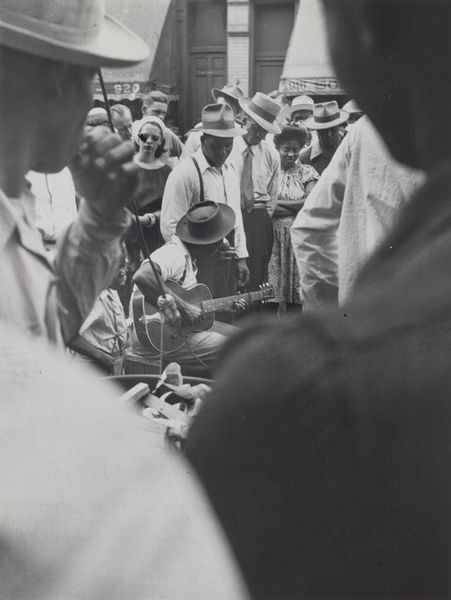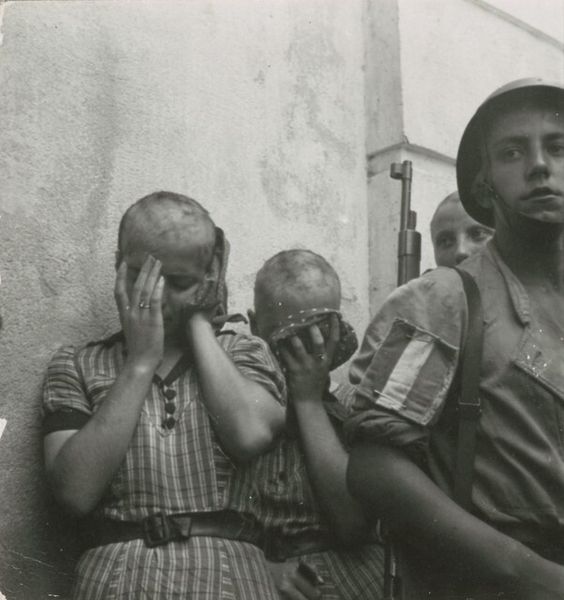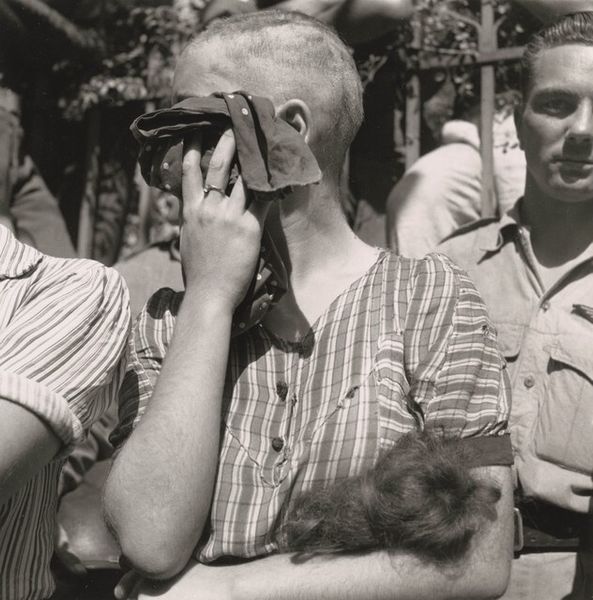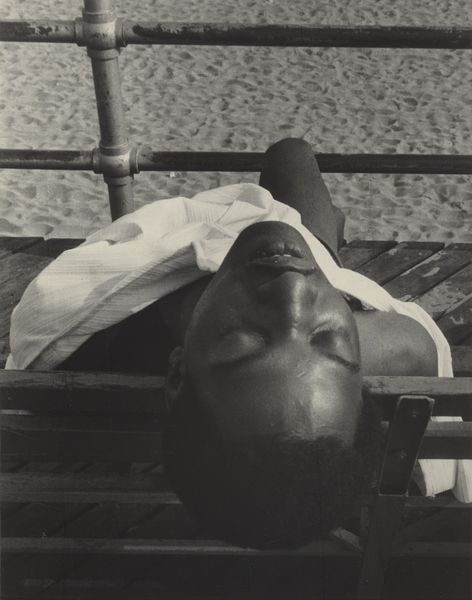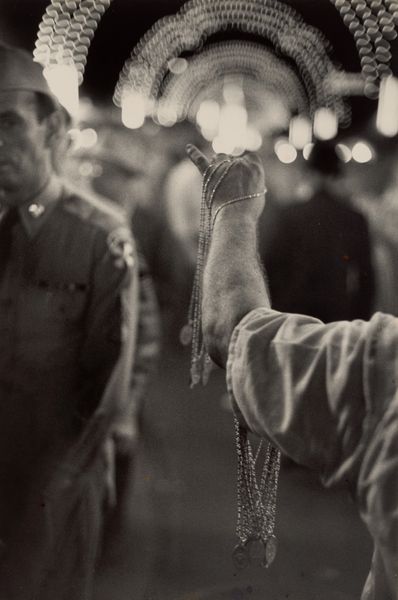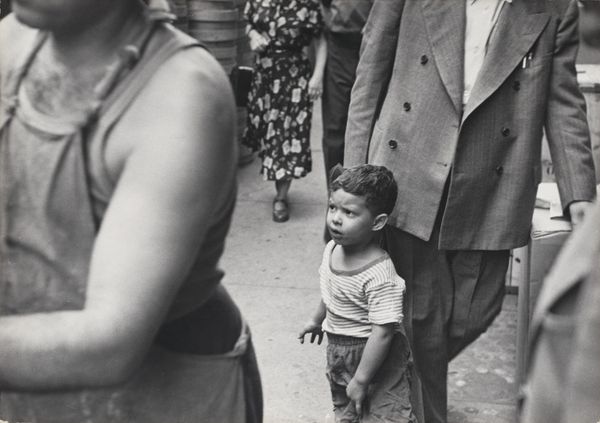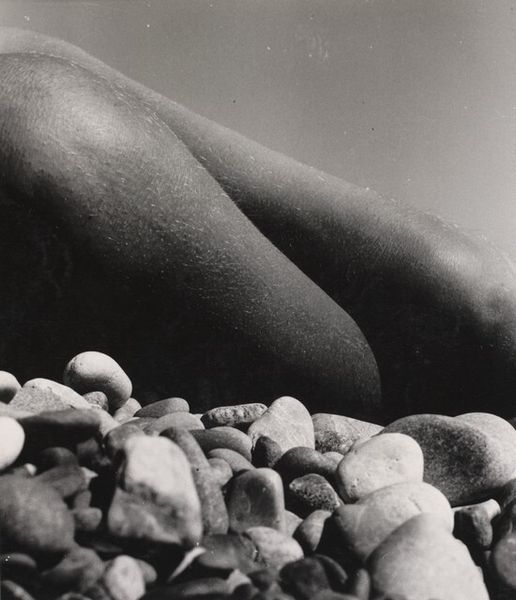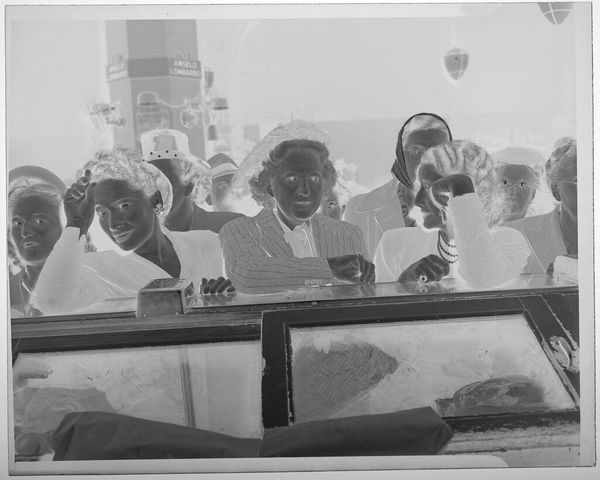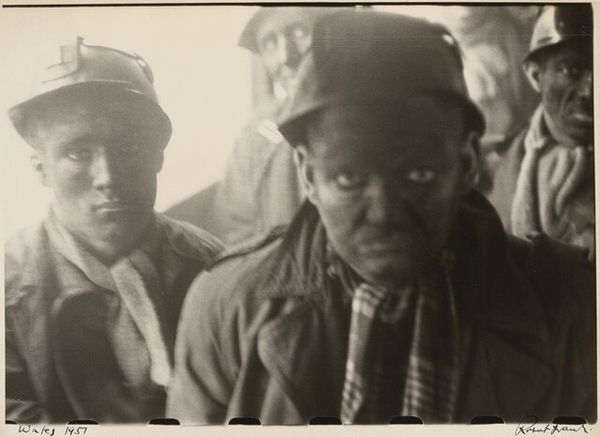
#
black and white photography
#
photo restoration
#
black and white format
#
archive photography
#
culture event photography
#
historical photography
#
black and white theme
#
black and white
#
monochrome photography
#
photographic element
Dimensions: image: 26.8 x 34.3 cm (10 9/16 x 13 1/2 in.)
Copyright: National Gallery of Art: CC0 1.0
Curator: Let's turn our attention to "Coney Island," a compelling photograph by Leon Levinstein, circa 1960. What strikes you initially? Editor: The density, and the anonymity. A crowd of men, mostly bare-chested, compressed into a single, almost sculptural mass rendered in shades of gray. It feels oddly isolating, despite all the bodies. Curator: Indeed. Note Levinstein’s masterful use of composition here. The cropping is severe; figures are cut off, and faces are obscured, prioritizing texture and form. The bald head in the foreground serves as an anchor, doesn't it, drawing the eye and emphasizing the grain of the photograph? Editor: It does, almost violently. This deliberate anonymity and the focus on physicality suggest a commentary on the working classes in America. Coney Island, at that time, a refuge—perhaps, in their struggle with the system. Curator: Perhaps. However, it may also echo ideas present within formalism. Focus, instead, on the tonality; Levinstein avoids pure blacks or whites. Everything is muted, subtly rendered, focusing on geometric planes of heads and shoulders in tight succession. Consider how this creates spatial ambiguity, flattening the image while also conveying depth through varying textures. Editor: All right, but these photographic techniques surely enhance, not negate, a social dimension. These choices amplify the sense of bodies pressed together on a sweltering beach—economically pressured into leisure together and hinting at certain male social structures? Curator: Undoubtedly the photograph hints, perhaps intentionally or not, at social structures. I’m most compelled by his engagement with light and shadow and how he shapes these elements into forms, almost sculpting with the camera. A key point would be the way in which the negative space defines the mass itself, creating its distinct volume. Editor: Fair enough. I'll grant the visual intricacies certainly stand out, providing insight into a unique art. Though, ultimately, my mind races more with questions: the relationship of that space to those within it, their proximity hinting at anxieties of the age... Curator: Ultimately, it presents us a moment pregnant with interpretative possibilities. Editor: An image of ambiguity, inviting questions as much as offering answers, a poignant capture.
Comments
No comments
Be the first to comment and join the conversation on the ultimate creative platform.
